The North East 250 is Scotland’s newest scenic driving route. It takes you on a circular journey of approximately 250 miles, spanning from the Granite City of Aberdeen in the north, through Speyside to Inverness and back again.
The route takes you through some of Scotland’s most stunning scenery, including lochs and mountains, beaches and forests – along with plenty of quaint villages to explore. Whether you want to visit whisky distilleries in Speyside or climb Ben Nevis in the Highlands, this route has something for everyone.
Driving past castles and over ancient bridges, this is an experience not to be missed! Along the way there are plenty of opportunities to stop at breweries and cafes, national parks and nature reserves – all while taking advantage of some of the most picturesque views that Scotland has to offer.
1. Dunnottar Castle
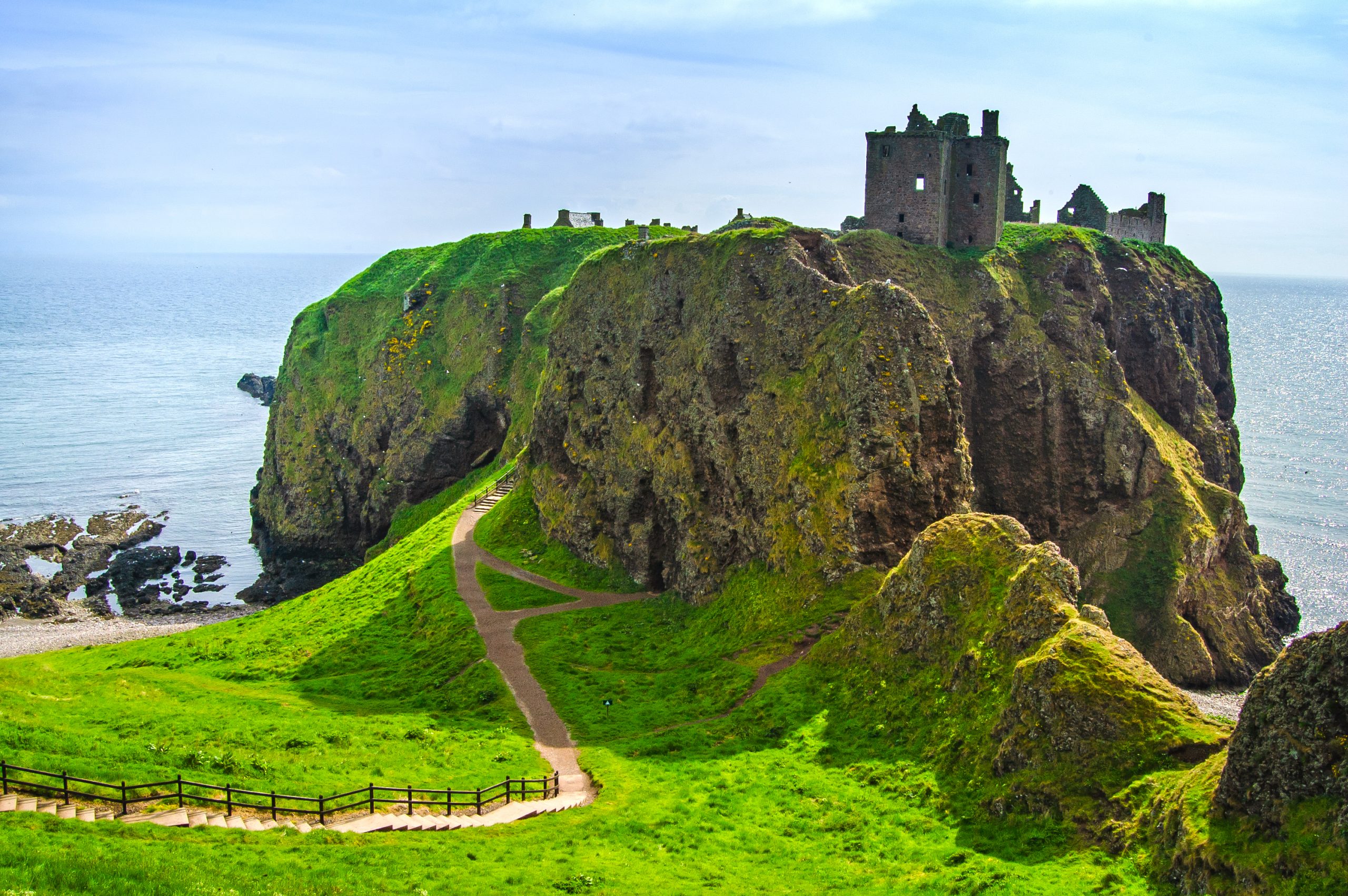
Dunnottar scottisch medieval fortress or castle. Highlands of Scotland, Uk, Europe.
It might not be where most people start the North East 250, but trust us when we tell you that this absolutely cannot be missed. Dunnottar Castle is, quite simply, one of the most iconic castles in Scotland – if you’re on Instagram, you’ll know why. It stands proudly on a rocky outcrop which can be seen from miles away, and is a must-see if you’re in this part of the world.
The castle was first built in the 14th century and since then has been involved in many dramatic events such as when the Honours of Scotland were hidden there to protect them from Oliver Cromwell’s forces.
Dunnottar Castle is open for visitors to explore its many rooms and battlements, as well as its grounds which include gardens and woodlands. There is also the Dunnottar Museum, where you can learn all about the fascinating history of this castle. If you don’t want to pay to go in you can still get fantastic views of the castle from the mainland.
> Map Link
2. Fittie

Fittie is an area in the city of Aberdeen located on the North Sea coast. It is full of history, with fishermen’s cottages that were built during the 18th and 19th centuries as well as a lighthouse which was built in 1861.
Fittie is a popular spot for activities such as walking, surfing and birdwatching due to its natural beauty and spectacular views. It is also home to the impressive Victoria Park, with its lush green grass and tranquil atmosphere. Located on the edge of the harbour it also offers some great opportunities for photography.
The area has undergone many changes over the years but still remains a much-loved part of Aberdeen today, and an excellent place to start your journey on the North East 250.
> Map Link
3. Balmedie Beach

Balmedie Beach is 11 miles north of Aberdeen on the North East 250 route. It is a stunning beach, with a large expanse of white sand and crystal clear water, surrounded by rolling dunes.
The beach has been awarded Blue Flag Status, meaning it has very high standards for cleanliness and safety. This also ensures that visitors to Balmedie Beach can enjoy activities such as swimming and surfing without worrying about pollution or other hazards.
Visitors to Balmedie Beach can also enjoy a range of other activities such as bird watching, fisherman’s walks, horse riding and beach volleyball.
> Map Link
4. Peterhead Prison Museum
Peterhead Prison Museum is located in the historic harbour town of Peterhead, Scotland. It tells the story of one of the oldest and most notorious prisons in Scotland’s history.
The museum has a range of exhibitions that illustrate life inside the prison as well as showcasing its historic buildings. Visitors can explore cells, staircases, yards and workshops, while learning about daily routines and punishments that prisoners had to face. The museum also hosts events and activities throughout the year, such as lectures, workshops and film screenings.
The museum strives to provide an educational experience which shines a light on social justice issues and shows visitors how far we have come since then. It is an important historical landmark for Scotland.
> Map Link
5. Bow Fiddle Rock
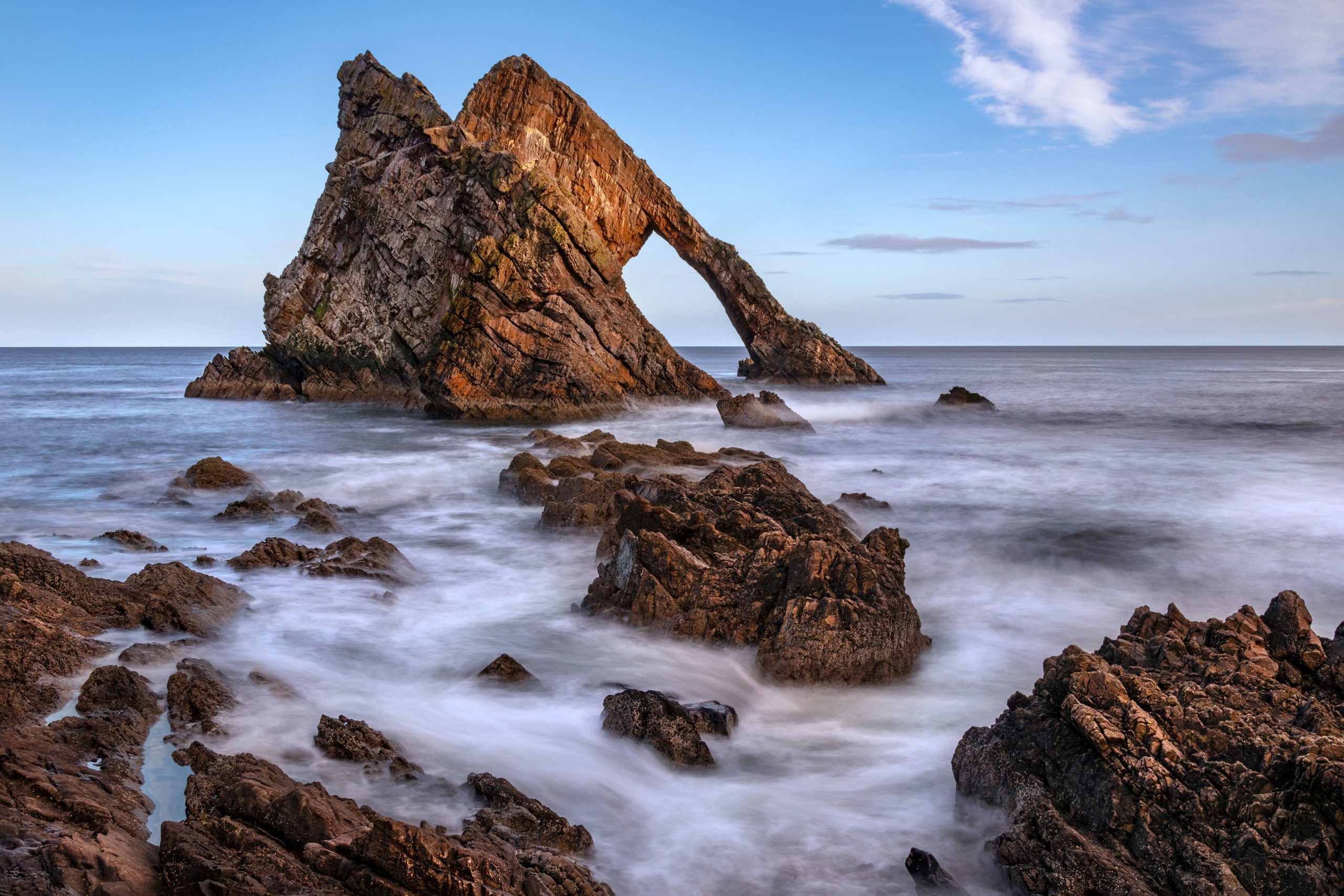
Bow Fiddle Rock – a natural sea arch near Portknockie on the northeast coast of Scotland. It is composed of Quartzite, a metamorphic rock which was originally quartz sandstone. This rock is part of the Cullen Quartzite formation which is seen along the coast between Buckie and Cullen. The formation is some 2,400m thick and dates from the Neoproterozoic Era, 1,000 to 541 million years ago.
Bow Fiddle Rock is a stunning natural rock formation located on the east coast of Scotland, near the village of Portknockie. It is believed to have been formed around 60 million years ago and stands at 15 metres tall.
The rock is said to resemble the shape of a fiddle bow, giving it its current name. The archway at the top of the rock has become an iconic symbol for Portknockie and is particularly popular for photographers. This area is also home to many birds, with sightings of black guillemots and razorbills being very common.
Bow Fiddle Rock is a fantastic example of nature’s unique beauty and an important part of Scotland’s heritage. It’s easy to miss from the road so be sure to follow the correct path to see the rock from the shoreline below.
> Map Link
6. Cullen Skink
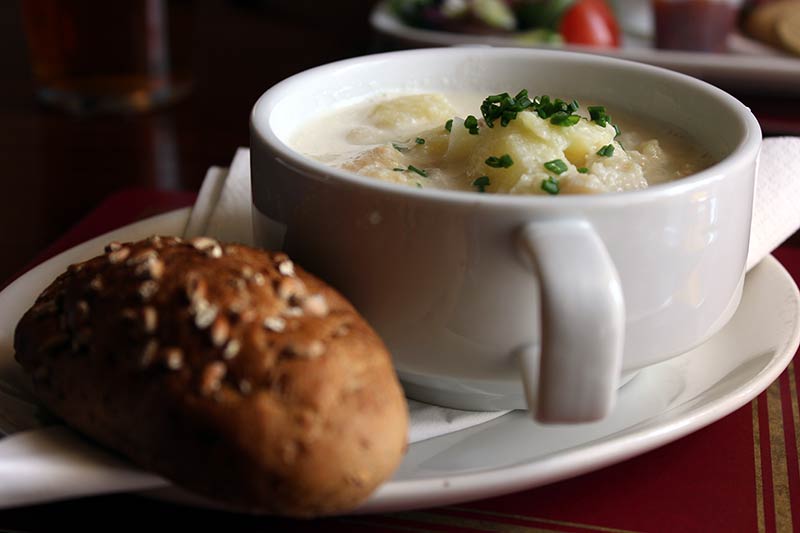
Cullen Skink is a traditional Scottish soup made from smoked haddock, potato and onion. It originates from the fishing town of Cullen in Moray, Scotland and has become an iconic national dish.
The soup is easy to make at home or can be cooked up in local restaurants with their own unique recipes. The ingredients are cooked until they form a thick and creamy consistency with a strong flavour of smoked fish. Cullen Skink is often served as an appetizer or with some lightly toasted bread.
Cullen Skink is a delicious and hearty soup that showcases Scotland’s unique culinary heritage, and there’s no more appropriate place to sample it than during this stop on the North East 250.
> Map Link
7. Scottish Dolphin Centre
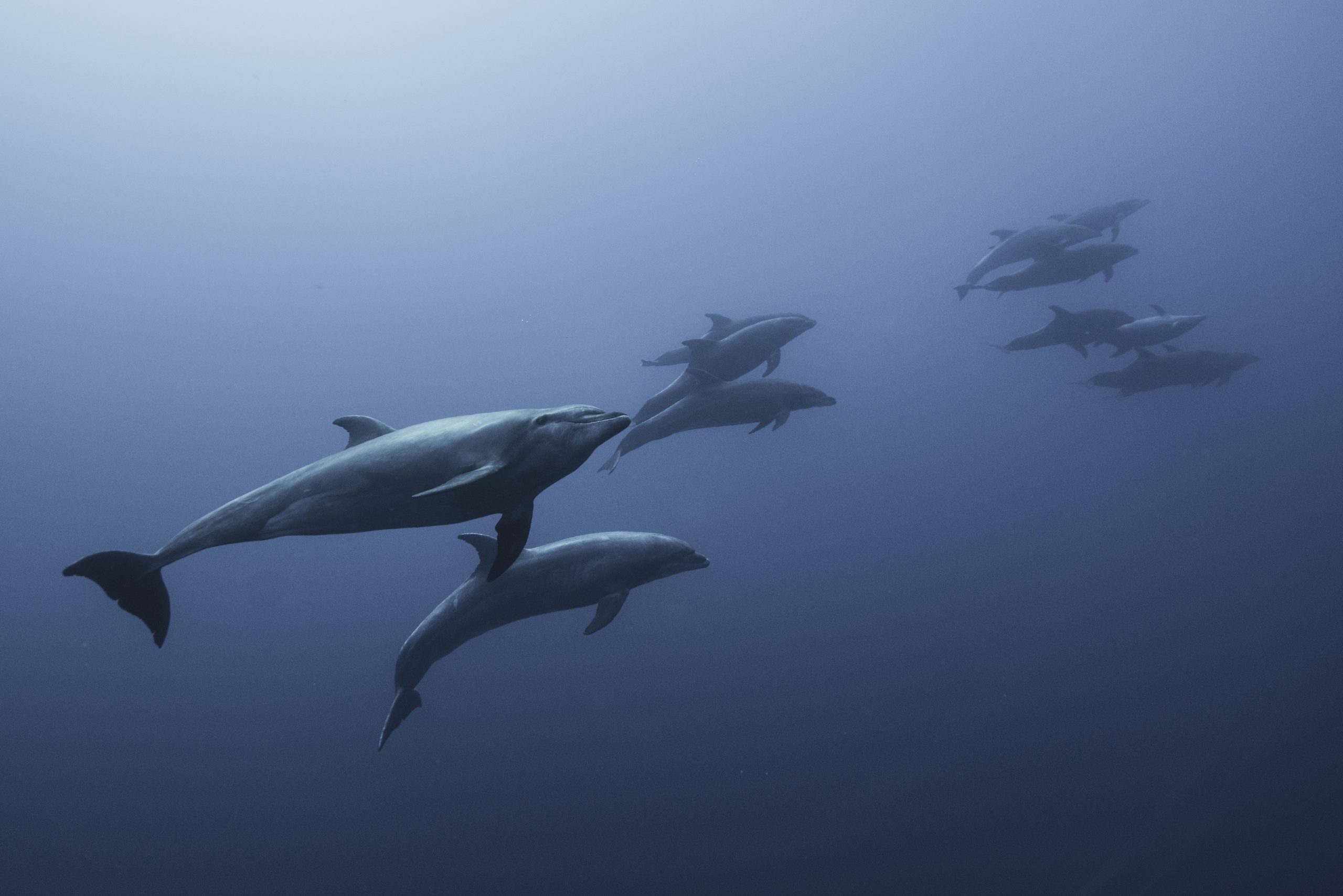
Family of Bottlenose Dolphin (Tursiops Truncatus) swimming up from deep blue
WDC Scottish Dolphin Centre is a marine conservation charity based in the mouth of the River Spey. Established in 1995, the centre works to protect and promote the welfare of dolphins and other marine life in the area by carrying out research and education, and raising funds for dolphin conservation projects.
WDC Scottish Dolphin Centre operates several research vessels which it uses to observe and collect data on dolphin populations throughout the region. It also runs educational programmes for local schools, where students can learn all about dolphins and the other sea creatures that inhabit the area.
The centre has developed an extensive network of community partners dedicated to protecting North Atlantic dolphins with outreach initiatives across Scotland including beach cleans, marine mammal surveys, talks, and workshops. By helping improve public understanding of marine ecology and bringing attention to issues that affect local wildlife such as over-fishing, pollution, and global warming WDC Scottish Dolphin Centre is making strides towards safeguarding our ocean’s future.
> Map Link
8. Speyside Cooperage
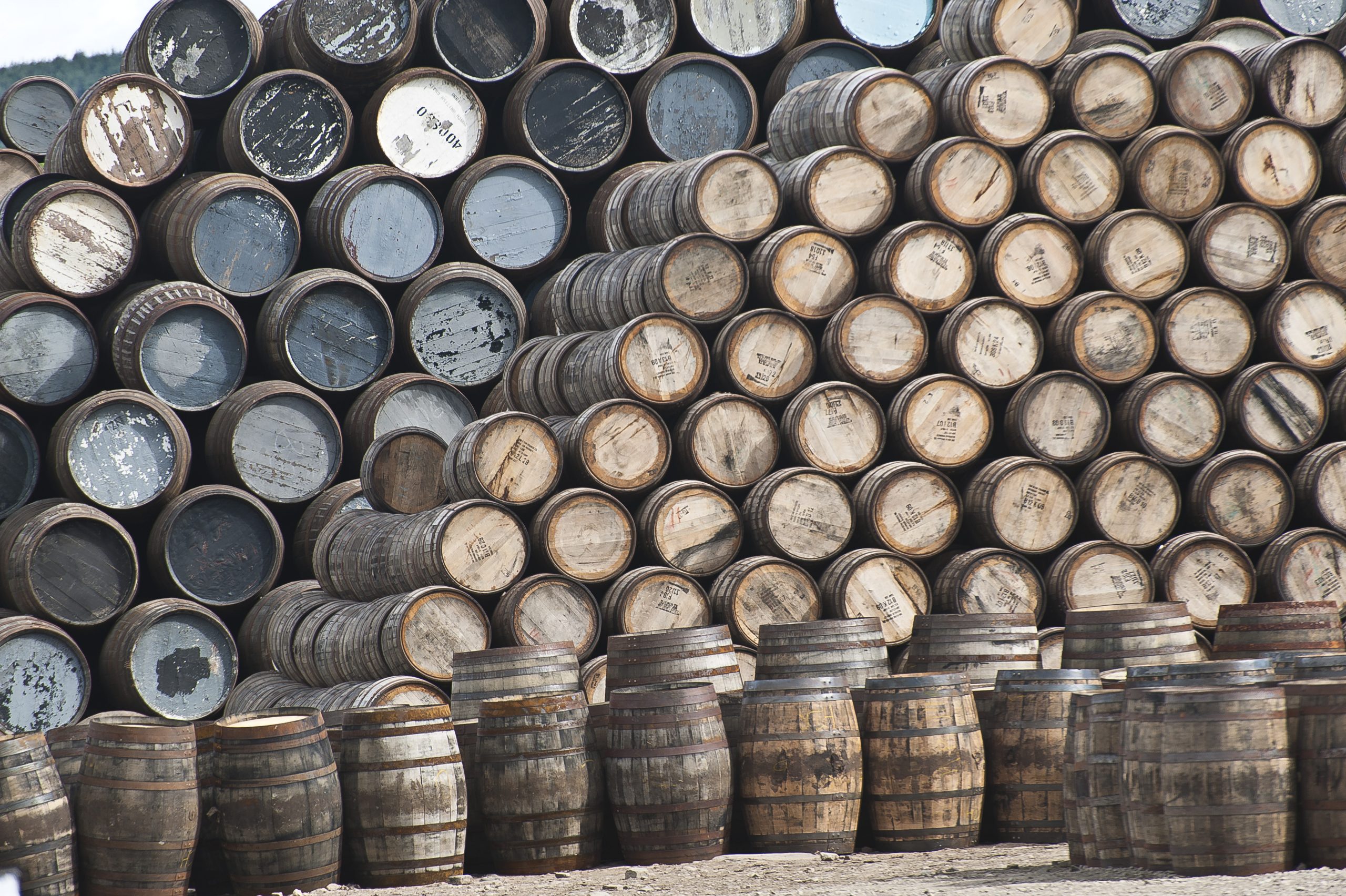
Speyside Cooperage is an independent cooperage based in Scotland’s whisky-producing region of Speyside. Founded in 1947, the cooperage specializes in making barrels for the Scotch whisky industry and is one of only a few coopers that still uses traditional techniques and tools to make its products.
At Speyside Cooperage, each barrel is crafted by hand with great attention to detail. The process involves lots of hard work as the wood has to be dried for up to two years before it can be used for making whisky barrels. The artisans also use fire to creosote the barrels which gives them their iconic smoky flavor.
Speyside Cooperage is renowned for producing high-quality whisky barrels that help give Scotch whisky its distinctive character and flavor.
> Map Link
9. Balvenie Castle
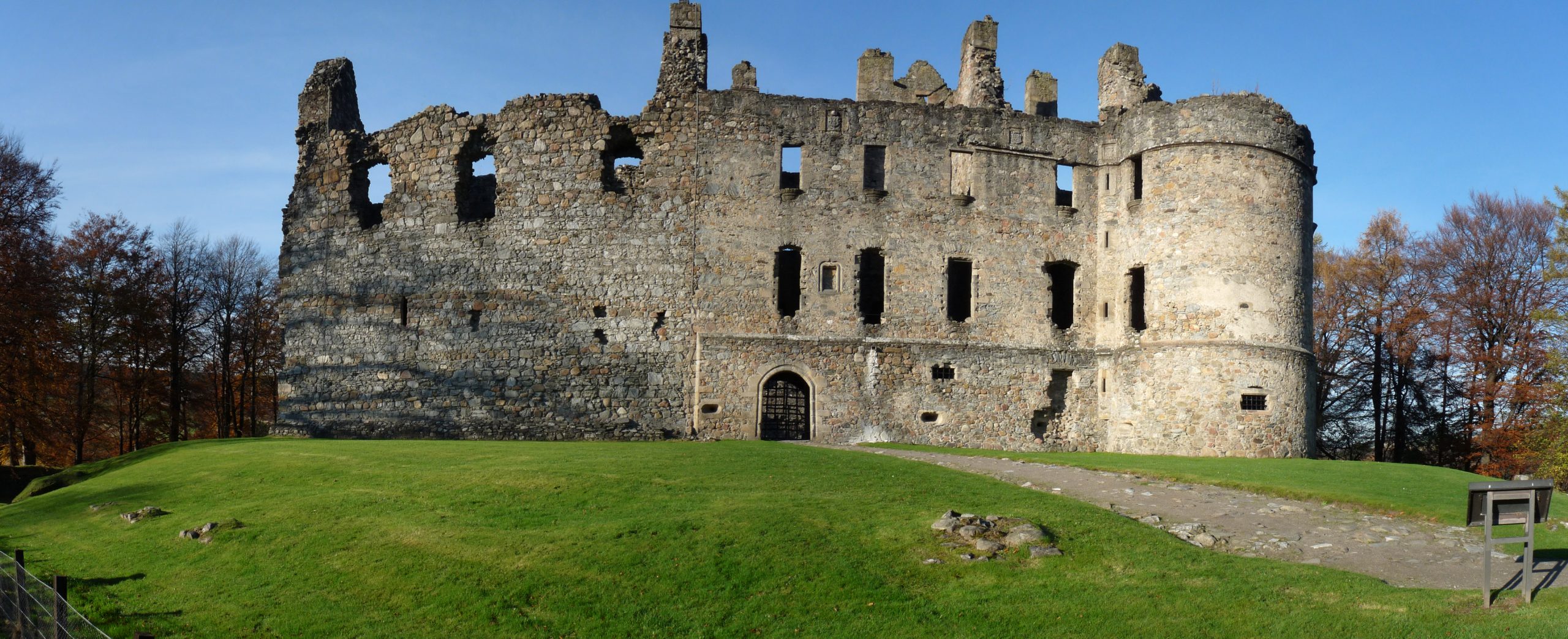
Balvenie Castle is a 13th-century stone castle located near Dufftown in Moray, on the North East 250. It was built by the Earl of Fife in 1298 as a residence for himself and his family.
Though it has seen its share of battles over the centuries, Balvenie Castle still stands today and is an important part of Scotland’s history and heritage. It features a six-storey tower built over several hundred years which includes a great hall and chapel.
The grounds are open to the public and feature beautiful gardens, stunning views and plenty of opportunity to explore this incredible castle.
The official route of the North East 250 now takes you into the Cairngorms and back out on the same road. Personally we do not recommend this detour if you have already seen your share of mountains.
> Map Link
10. Balmoral Castle
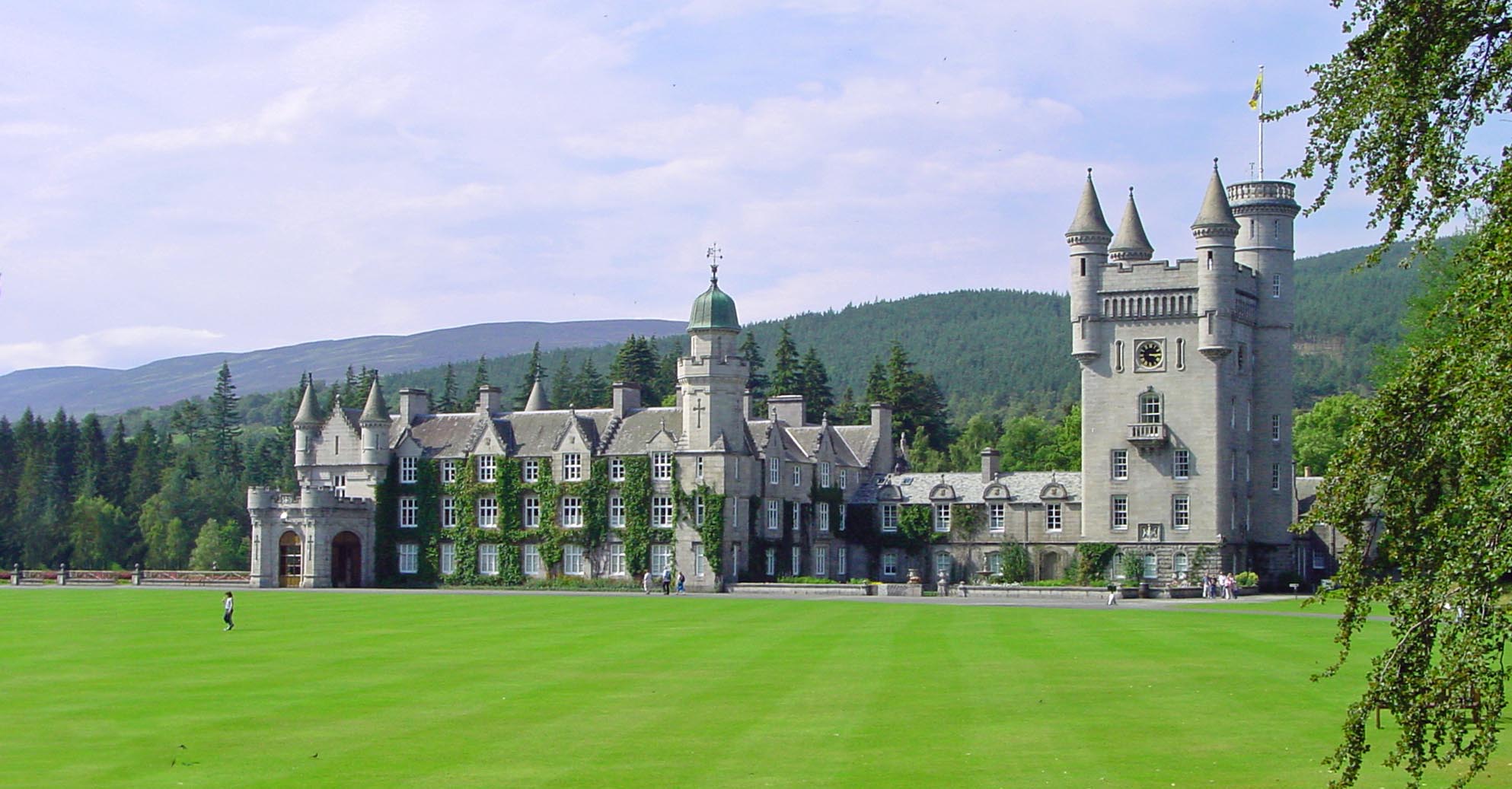
Balmoral Castle has been owned by the British royal family since 1852 when Queen Victoria and her husband Prince Albert purchased it as a holiday home.
The castle is set within a 50,000 acre estate, on the banks of the River Dee and is surrounded by lush green hills and mountains, heather-covered moors, forests and manicured gardens. The landscape was designed by Prince Albert to reflect his admiration for the ‘natural beauty’ of the area.
Today, Balmoral Castle remains a favourite amongst members of the Royal Family who visit throughout the year for private holidays and ceremonial purposes. Away from public view, many Royal traditions are still upheld at Balmoral including Highland Gatherings and Ground Game shooting parties.
> Map Link
